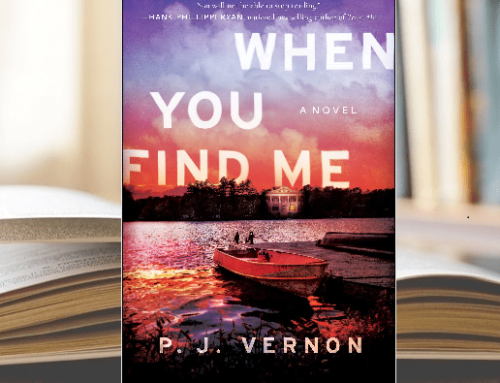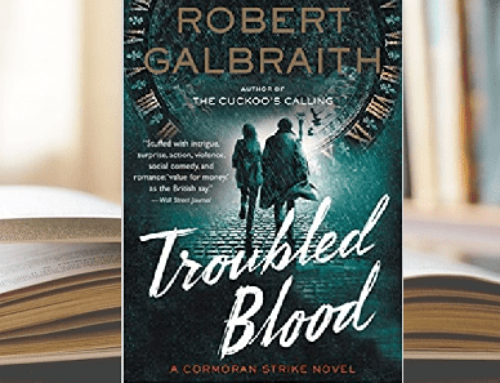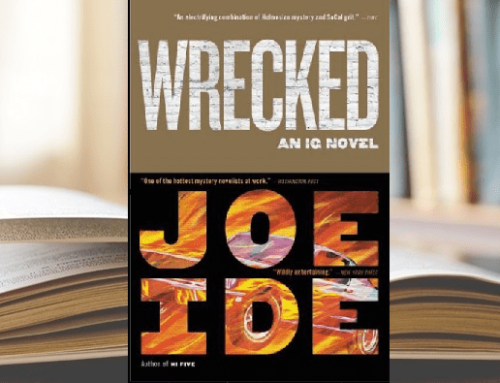[by Ross Browne]
Flap Copy: He’s handsome and charming, but something in his past has made him abide by a different set of rules. He’s a serial killer whose one golden rule makes him immensely likable: He only kills bad people.
Ross’s Take: Though Darkly Dreaming Dexter was a book that I feel could have been improved, there’s a good deal the author does quite well in terms of pacing, story setup, drawing readers into the world of this story, and setting the stage for a series of books that later became a successful TV series. Here’s how the story unfolds in the first 50 pages.
Chapter 1: The book opens with this:
Moon. Glorious moon. Full, fat reddish moon, the night as light as day, the moonlight flooding
down across the land and bringing joy, joy, joy.
First, a confession…Had this book not been recommended to me, I may have stopped reading right there. The last thing I personally want out of a crime thriller/dark comedy hybrid is something that feels like a labored effort at literary style. But it’s an interesting and distinctive bit of writing, and fortunately (at least in the eyes of some) not reflective of the tone of the narrative. The writing is, in general, much more straightforward and down to earth. Pretty darn readable, actually.
A more important point is that by one page into the scene, readers see that protagonist Dexter Morgan is in serial killer mode and stalking his prey. It looks like things are likely to end badly for Father Donovan, and though readers don’t yet know of the “golden rule” the flap copy alludes to, it becomes clear pretty quickly that this priest is no saint and may well deserve what feels like an inevitable demise.
A tense scene follows as Dexter ambushes the man and brings him back to some kind of lair, where the rotting corpses of seven children are waiting. It’s not stated explicitly, but the implication is that Father Donovan killed and perhaps sexually abused these kids and probably others. The 13-page chapter ends with Dexter telling readers simply that he “went to work.” (A clever finish that stokes readers’ imaginations.)
Chapter 2: By the first line of Chapter 2, Father Donovan has presumably been hacked into neat little pieces, leaving Dexter free to reflect in first-person narrative about the “Dark Passenger,” an internal demon of sorts who is what compels this respected forensic crime expert to play for the other team from time to time and go out and kill people. He goes home, takes a shower, and heads to work after a call from his foster sister Deb, who is on scene at the site of the gruesome murder of a Miami hooker who has also been hacked to pieces with remarkable near-surgical precision. We soon learn that Deb is a real hottie, but her great figure and envied looks are at least part of what’s thwarting her effort to become a homicide detective. She’s stuck working vice, and if her boss has anything to say about it, that’s exactly where she’ll stay.
Chapter 3: Weighing in at 10 pages, Chapter 3 is largely expositional in focus, but things stay interesting enough thanks to the nature of the murder Deb and Dex are discussing and the fact that there’s no blood at all on scene. This has Dexter very intrigued. His outward goal is to help Deb catch this killer and get a well-deserved promotion, but we see that he respects this killer’s work and feels an odd sense of kinship that will likely complicate things in good fashion.
It’s really too bad that Deb comes across (IMHO) as dumb as a sack of hair because this really undermines the effectiveness of what could be a very good subplot. But it gets off on a pretty strong footing here in this dialogue-driven chapter about her aspirations and why this promotion is going to be such an uphill battle. There’s not a lot of action in this chapter, but it does serve to set the plot and subplot in motion. There’s some freak out there driving the streets of Miami killing hookers and he needs to be stopped! If the Deb/Dex team has their way, this will serve as a vehicle to get her out of vice and into homicide.
Chapter 4: The first few pages of Chapter 4 move slowly—Dex out on his boat reflecting on various things, none of which are earth-shatteringly interesting but all pertinent enough to the story at hand. Where things get genuinely fascinating is in a flashback scene starting on page 48, where readers get to see Dex as a young boy camping with his foster father. It’s here in this memorable and chilling scene that we learn about the origin of that “golden rule.” It turns out Harry has discovered the bodies of a bunch of neighborhood pets Dexter has killed and has intuited, quite correctly, that his son is “different.”
A candid conversation follows in which Dexter confesses to his father that he likes to kill and that his impulse isn’t limited to dogs. He hasn’t killed a person yet, but the dialogue makes it pretty clear that he could and would without hesitation.
Rather than sending his son to an institution, Harry—a cop himself, mind you—says that he’ll keep Dexter’s secret in confidence if Dexter will just confine his killing activity to bad people—people who deserve it, people who have it coming. Readers are left to consider that maybe Dexter’s sadistic impulses are justified by the unthinkable (and thus far unnamed) horrors he experienced as a very young child.
And so down comes the curtain on the terrain of this first 50, at page 54 where Dexter confesses that if he were capable of love, he would have loved Harry. (A very nice touch!)
To the good here is that in the span of about 50 pages, the author has unleashed a clever concept and launched an interesting plot and potential-laden subplot. He introduces an interesting and highly original protagonist and contextualizes the Jekyll/Hyde dichotomy at the heart of the story’s premise in memorable fashion. Readers have been treated to (or subjected to, depending on how you look at it) two gruesome murders, some decent Miami atmospherics, and some funny, dark lines along the way. There’s even a platonic love interest, which suits Dexter’s Teflon heart to a tee, as his girlfriend is just part of his disguise.
I stuck with the book for another 100 or so pages before putting it down in hunger for something that was a better fit to my reading tastes, but not without a nod of respect for a job well-done when it comes to story and series setup.
It was the constant dumb luck that got to me after a while, Dexter’s spidey sense always being right, impossible leaps of intuition that turn out dead-on. And the fact that Deb seems no more qualified to be a homicide detective than I am to do brain surgery. Oh, and then there’s the scene where the killer (who Dex manages to luck into finding almost immediately after setting out on a whim to take a midnight drive) decides to throw a decapitated head at Dexter before jumping his refrigerated truck Blues Brothers–style over a rising drawbridge. I realize this is all intended to be funny, but this wasn’t a case where the comedy made the book that much more palatable for this reader where believability is concerned. But then again, there are only five or so million people in Miami…
Word has reached me that many readers find the show to be better than the books. Darkly Dreaming Dexter isn’t my personal cup of tea but it’s worth reading, especially if you’re looking for ideas on how to start a series and introduce expositional elements of complex backstory in an interesting and entertaining way.







